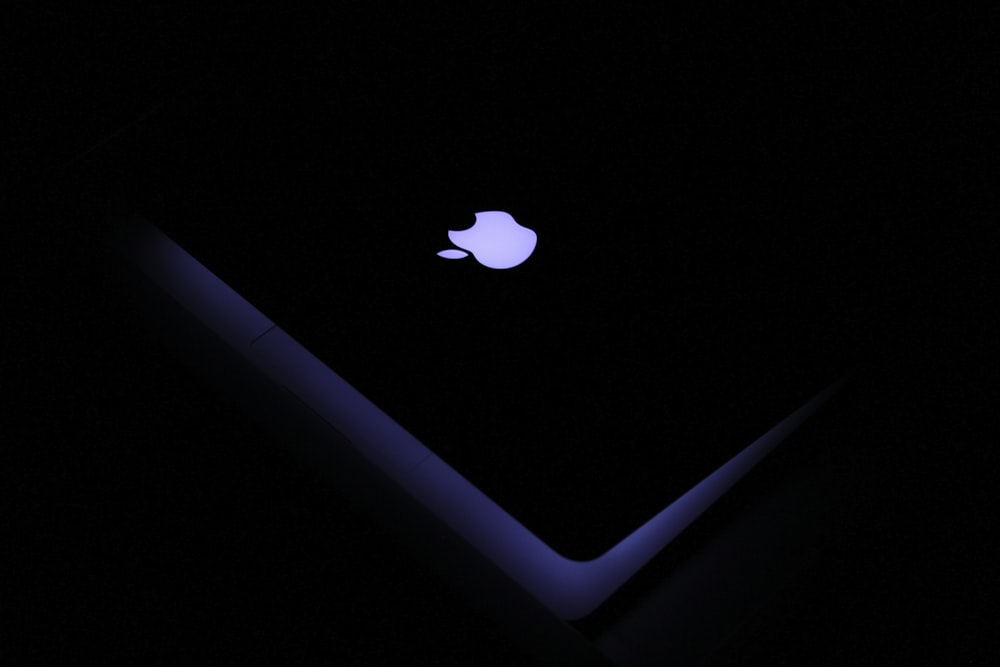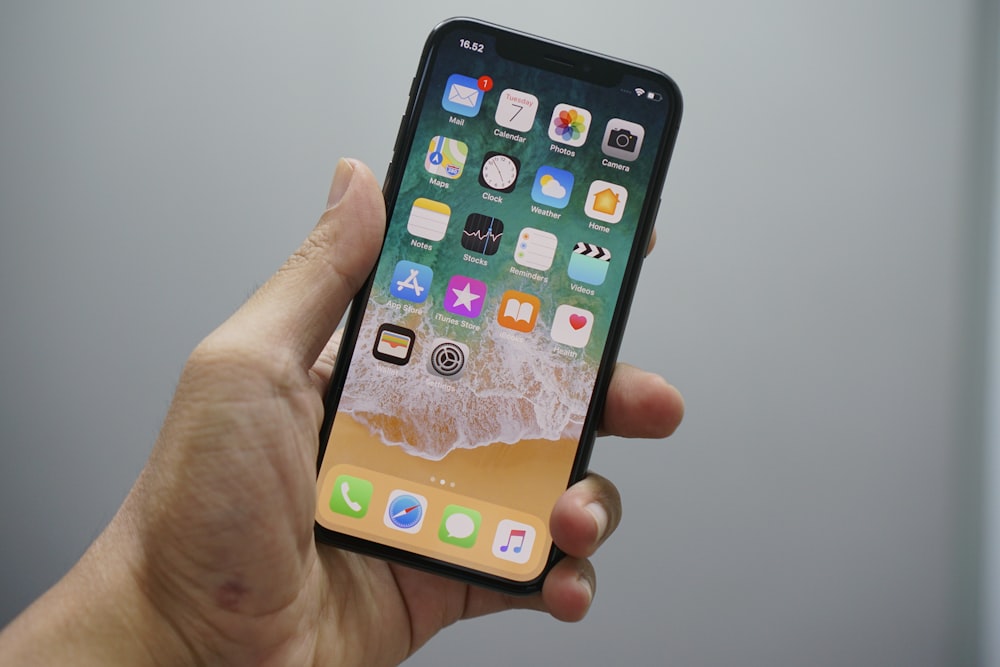Apple Inc., a renowned multinational technology company, has consistently maintained an influential presence in the global market. This article delves into an in-depth analysis of Apple’s sales, breaking down revenue by product category and geographical region.
An Overview of Apple’s Sales
Apple Inc. continues to stand at the forefront of technology and innovation, with its sales figures showcasing its significant influence and dominance in the global market. The company’s comprehensive product range, headlined by its flagship iPhone, along with its array of services, Mac computers, iPads, and wearables, contributes to its substantial revenue stream.
As of the first quarter of 2024, the iPhone remains Apple’s crown jewel, contributing to over 58 percent of the company’s total revenue. This impressive figure highlights the iPhone’s continued popularity and its crucial role in Apple’s financial ecosystem. The device’s advanced features, seamless integration with other Apple products, and strong brand loyalty among consumers help maintain its status as a market leader.
However, Apple’s financial landscape is experiencing a shift, with services, including iCloud, Apple Music, and the App Store, as well as the wearables, home, and accessories category, which includes products like the Apple Watch, AirPods, and HomePods, seeing an increase in their revenue contributions. This diversification reflects Apple’s strategic move towards less dependency on iPhone sales and a broader focus on creating a more comprehensive ecosystem of products and services.
This strategy not only enhances customer engagement and satisfaction but also opens up new revenue streams and stabilizes income, counterbalancing the cyclical nature of hardware sales. The growth in services and wearables is indicative of a changing consumer landscape, where customers seek more integrated digital experiences and value-added services alongside their device purchases.
In summary, while the iPhone continues to be Apple’s primary sales driver, the company’s evolving product and service offerings are creating a more balanced revenue distribution. This shift is essential for sustaining long-term growth and maintaining Apple’s competitive edge in the fast-evolving tech industry. As Apple continues to innovate and expand its product lines, it will be interesting to see how these dynamics play out in its overall sales composition in the coming years.
iPhone – The Major Revenue Generator
The iPhone stands as a pillar in Apple’s lineup, not only redefining the smartphone market upon its release but also continually setting the pace for industry standards in innovation, design, and user experience. Its launch marked a seismic shift in mobile computing, blending technology and lifestyle in unprecedented ways.
As Apple’s flagship product, the iPhone has consistently been the company’s top revenue generator. Illustrating its market dominance, in the first quarter of fiscal year 2024, iPhone sales astonishingly accounted for 52% of Apple’s total revenue. This statistic underscores the central role the iPhone plays within Apple’s portfolio, contributing significantly more to the company’s financial health than any other product line.
Despite its substantial contribution, there has been a noticeable shift in the revenue composition over recent years. The proportion of total revenue attributed to the iPhone has slightly declined. This trend does not necessarily reflect a decrease in iPhone sales or popularity but rather highlights Apple’s successful expansion and diversification into other areas.
This strategic broadening of focus includes the development of services like Apple Music, iCloud, and Apple TV+, as well as other hardware such as the Mac, iPad, and wearable devices like the Apple Watch and AirPods. By expanding its product and service offerings, Apple is not only reducing its reliance on iPhone sales but is also tapping into new revenue streams, enhancing the ecosystem surrounding its products, and increasing the lifetime value of its customer base.
However, the iPhone continues to be a fundamental component of Apple’s business model. Its integration with other Apple services and products encourages a cohesive and interconnected user experience, promoting customer loyalty and fostering a comprehensive ecosystem. The iPhone’s ability to drive sales, engage consumers, and introduce users to other Apple services and products solidifies its status as a major revenue generator for the company.
In conclusion, while the iPhone remains a central element of Apple’s success, the company’s strategy of diversification and ecosystem expansion reflects its adaptability and foresight in a rapidly evolving technology landscape. The iPhone’s role as a key revenue driver is evolving as Apple continues to grow and diversify, ensuring long-term sustainability and continued market leadership.
Apple Services – A Growing Division
Apple’s foray into the services sector has been a strategic move that complements its hardware offerings and taps into the digital lifestyle of modern consumers. The company’s array of services, including the iTunes Store, App Store, Mac App Store, iBooks Store, AppleCare, Apple Pay, and various licensing deals, has created a robust ecosystem that not only enhances user experience but also generates substantial revenue.
Over recent years, Apple’s services division has experienced remarkable growth. By 2020, this segment alone generated an impressive $53 billion in revenue, cementing its position as Apple’s second-largest revenue source, trailing only behind the iPhone. This significant figure highlights the successful diversification of Apple’s revenue streams and the increasing importance of digital services in its overall business model.
The rise of Apple’s services division is indicative of the company’s strategic pivot from being primarily a hardware producer to a more balanced tech ecosystem provider. This shift aligns with broader industry trends, where digital content, software, and services are becoming increasingly crucial for tech companies’ growth and profitability.
Several factors contribute to the success of Apple’s services:
- Ecosystem Integration: Apple’s services are seamlessly integrated with its hardware, providing a cohesive and intuitive user experience. This integration encourages users to subscribe to multiple services, enhancing customer loyalty and increasing average revenue per user.
- Large User Base: With a vast global base of active devices, Apple can leverage its hardware success to promote its services, instantly reaching millions of users.
- Quality and Exclusivity: Apple maintains high standards for the content and applications available through its services, attracting users seeking quality and exclusivity.
- Recurring Revenue Model: Many of Apple’s services, such as Apple Music and iCloud, operate on a subscription model, providing a stable and recurring revenue stream.
- Market Expansion: Apple continues to expand its services to new countries and regions, broadening its market reach and tapping into new revenue opportunities.
The growing contribution of services to Apple’s overall revenue reflects the company’s successful shift towards a more service-oriented business model. As hardware sales, particularly in the smartphone market, become more saturated, services offer a viable path for sustained growth. Looking ahead, Apple is likely to continue investing in and expanding its services division, further solidifying its position as a leading tech ecosystem provider.
In conclusion, the expansion and success of Apple’s services division signify the company’s adaptation to changing market dynamics and consumer preferences. As this segment continues to grow, it not only diversifies Apple’s revenue sources but also strengthens the ecosystem that keeps users engaged and loyal to the brand.
Mac and iPad – Consistent Contributors
While the iPhone undeniably leads Apple’s product lineup in terms of revenue, other devices like the Mac and iPad have established themselves as stalwarts in Apple’s financial reports. These products, integral to Apple’s hardware ecosystem, have shown resilience and growth, contributing significantly to the company’s overall sales.
The Mac: A Steady Performer
Apple’s Mac computers have carved out a unique space in the personal computing market. Despite overall fluctuations and a general decline in the global PC market, Mac has defied trends, showcasing steady growth in sales. This sustained performance is attributed to several factors:
- Innovation and Quality: Continuous innovation, coupled with a reputation for quality and durability, keeps the Mac appealing to both new customers and loyal Apple users.
- Creative and Professional Market: Macs have maintained strong popularity among creative professionals and educators, markets that value the Mac’s performance and software ecosystem.
- Ecosystem Integration: The seamless integration between Macs and other Apple devices, providing a cohesive user experience, encourages existing Apple users to stay within the ecosystem when purchasing a computer.
The iPad: A Solid Revenue Source
Introduced as a middle-ground product between the iPhone and Mac, the iPad has found its niche and maintained its position as a significant contributor to Apple’s revenue. Despite a general leveling off in the tablet market, the iPad has experienced consistent sales, supported by:
- Versatility and Usability: The iPad’s range from budget-friendly options to high-end models like the iPad Pro caters to a wide spectrum of users, from casual browsers to professional artists and designers.
- Educational and Enterprise Adoption: iPads have been widely adopted in educational settings and industries for their portability, ease of use, and robust features.
- Regular Updates and Improvements: Frequent updates and improvements to the iPad’s hardware and software ensure it remains competitive and appealing to consumers.
Both the Mac and iPad have benefited from broader global trends:
- Remote Work and Learning: The shift towards remote work and learning due to global circumstances has spurred demand for personal computing devices, from which Mac and iPad have gained.
- Consumer Spending on Technology: An overall increase in consumer spending on technology enhances sales for trusted brands like Apple, further boosting Mac and iPad revenues.
In conclusion, while the iPhone continues to be Apple’s flagship product, the consistent performance of the Mac and the enduring appeal of the iPad play crucial roles in the company’s financial health. These products not only contribute substantial revenue on their own but also reinforce the strength and diversity of Apple’s product ecosystem. Moving forward, the Mac and iPad are likely to continue as integral components of Apple’s strategy, contributing to the company’s growth and innovation trajectory.
Wearables, Home, and Accessories
Apple’s diversification into the wearables, home, and accessories market represents a strategic expansion beyond its core products of iPhones, Macs, and iPads. This segment, encompassing the Apple Watch, AirPods, HomePod, Apple TV, and Beats products, has become a noteworthy contributor to the company’s portfolio, showcasing impressive growth and consumer adoption.
Rapid Growth and Consumer Adoption
Though the wearables, home, and accessories segment accounts for a smaller portion of Apple’s total revenue compared to giants like the iPhone or services, its growth trajectory has been remarkable. Products like the Apple Watch and AirPods have not only become cultural phenomena but also set the standard in their respective markets. The Apple Watch has solidified its place as a leading wearable device, offering features ranging from fitness tracking to heart rate monitoring, while AirPods have redefined user expectations for wireless earbuds.
Strategic Importance of Wearables
The success of Apple’s wearables can be attributed to several key factors:
- Integration and Ecosystem: Like other Apple products, wearables are tightly integrated into the Apple ecosystem, enhancing the user experience by seamlessly connecting with iPhones, Macs, and iPads.
- Innovation and Quality: Continuous innovation, coupled with Apple’s emphasis on quality and user experience, has kept products like the Apple Watch and AirPods at the forefront of consumer technology.
- Health and Lifestyle: The increasing consumer focus on health and lifestyle has propelled the popularity of devices like the Apple Watch, which offers comprehensive health tracking features.
Expansion into Home and Accessories
Beyond wearables, Apple has also made significant strides in the home technology and accessories space. The HomePod and Apple TV extend Apple’s reach into the home, offering smart home capabilities and content streaming, respectively. While they may not be as dominant in their markets as some of Apple’s other products, they contribute to the ecosystem’s cohesion and offer growth opportunities in new tech sectors.
Future Prospects
The wearables, home, and accessories segment presents significant growth opportunities for Apple. As technology continues to evolve and consumer habits change, Apple is well-positioned to innovate and expand its product offerings in this area. The increasing interest in health, fitness, and smart home technologies suggests a bright future for this segment, with potential for new products and continued revenue growth.
In conclusion, while the wearables, home, and accessories category might not match the iPhone’s monumental contribution to Apple’s revenue, its rapid growth and increasing market presence highlight its importance to Apple’s strategy. This segment not only diversifies Apple’s revenue streams but also strengthens its ecosystem, creating a more comprehensive and integrated range of products and services for consumers. As Apple continues to innovate in this space, the wearables, home, and accessories segment is expected to play an increasingly significant role in the company’s future.
Apple’s Global Presence
Apple’s vast global footprint is a testament to its universal appeal and strategic international operations. The company’s sophisticated approach to global markets significantly bolsters its sales figures and reinforces its position as a leading technology firm worldwide.
Dominance in the Americas
The Americas remain Apple’s stronghold, accounting for over 42% of the company’s sales in the first quarter of 2024. This region, primarily driven by the United States, serves as the bedrock of Apple’s financial success, showcasing the brand’s strong resonance with consumers’ lifestyles and preferences. The high market penetration in the Americas is attributed to a combination of cutting-edge product offerings, a robust retail presence, and effective marketing strategies tailored to the needs and wants of American consumers.
Expansion in Europe and China
Beyond the Americas, Apple has made substantial strides in other significant markets, notably Europe and China. In Europe, Apple’s growth is facilitated by its ability to cater to diverse consumer bases across various countries, each with its unique cultural and economic landscapes. Apple’s strategy in Europe involves a mix of localized marketing campaigns, extensive retail networks, and a strong focus on privacy and environmental sustainability, aligning with European consumer values.
China presents a different scenario; it’s a highly competitive market with strong local brands. Despite these challenges, Apple has managed to carve out a significant presence in China, thanks to its premium product positioning, innovation, and a growing emphasis on services. Apple’s brand prestige, coupled with its commitment to privacy and data security, resonates well with the Chinese middle class and tech-savvy consumers, aiding its growth in this critical market.
Leveraging Market Diversity
Apple’s global strategy does not merely replicate a one-size-fits-all approach; instead, it tailors its operations, product offerings, and marketing strategies to fit the nuanced demands of each regional market. This localized approach, combined with the universal appeal of its products, enables Apple to maintain and expand its global presence.
Moreover, Apple’s supply chain and manufacturing strategies are globally diversified, allowing the company to navigate international trade uncertainties and market fluctuations more effectively. This global network not only supports Apple’s sales but also enhances its resilience in the face of geopolitical and economic changes.
Conclusion
Overall, Apple’s sales figures reflect the company’s successful strategy of product diversification and global expansion. While the iPhone continues to be the major revenue generator, other segments like services and wearables have shown promising growth. As Apple continues to innovate and expand its product portfolio, it will be interesting to see how these trends evolve in the future.
Apple Sales FAQs
Do Apple products ever go on sale?
Yes, Apple products do go on sale, though less frequently than other brands. Sales usually occur during special events like Black Friday, Cyber Monday, and back-to-school promotions. Additionally, discounts are often available through third-party retailers and on refurbished products directly from Apple.
What is Apple’s annual sales?
Apple’s annual sales can vary year by year. They publish their financial results quarterly and annually. For the most accurate and up-to-date figures, refer to Apple’s official investor relations website.
What phone number is 800 275 2273?
The phone number 800 275 2273 is Apple’s customer service number in the United States. Known as 1-800-APLCARE, this line is used for product support, service inquiries, and technical assistance.
What is the most sold item at Apple?
Historically, the iPhone has been the most sold item at Apple, contributing significantly to the company’s revenue. It’s known for its popularity worldwide and consistently high sales figures.
Is 1 800 275 2273 legit?
Yes, 1 800 275 2273 is a legitimate customer service number for Apple. If you have any concerns about your Apple products or services, you can contact this number for assistance.
What number is 1 877 255 5923?
The number 1 877 255 5923 is associated with Apple’s customer service for accessibility and assistive technology support. This line helps users with disabilities receive technical support and information on using Apple products.
What is the most sold product in the world?
While this can vary over time, historically, products like Coca-Cola, various petroleum products, and smartphones are among the most sold globally due to their widespread consumer base and usage.
Which is the most sold iPhone in the world?
While specific models can vary in popularity over time, versions like the iPhone 6 and iPhone 11 have been noted for their high sales, making them some of the most sold iPhone models globally.
What is Apple’s biggest money maker?
Apple’s biggest money maker has traditionally been the iPhone, accounting for a significant portion of the company’s overall revenue. It’s followed by services, Mac, and wearables/home/accessories in terms of revenue generation.
Featured Image Credit: Photo by Bangyu Wang; Unsplash – Thank you!
















